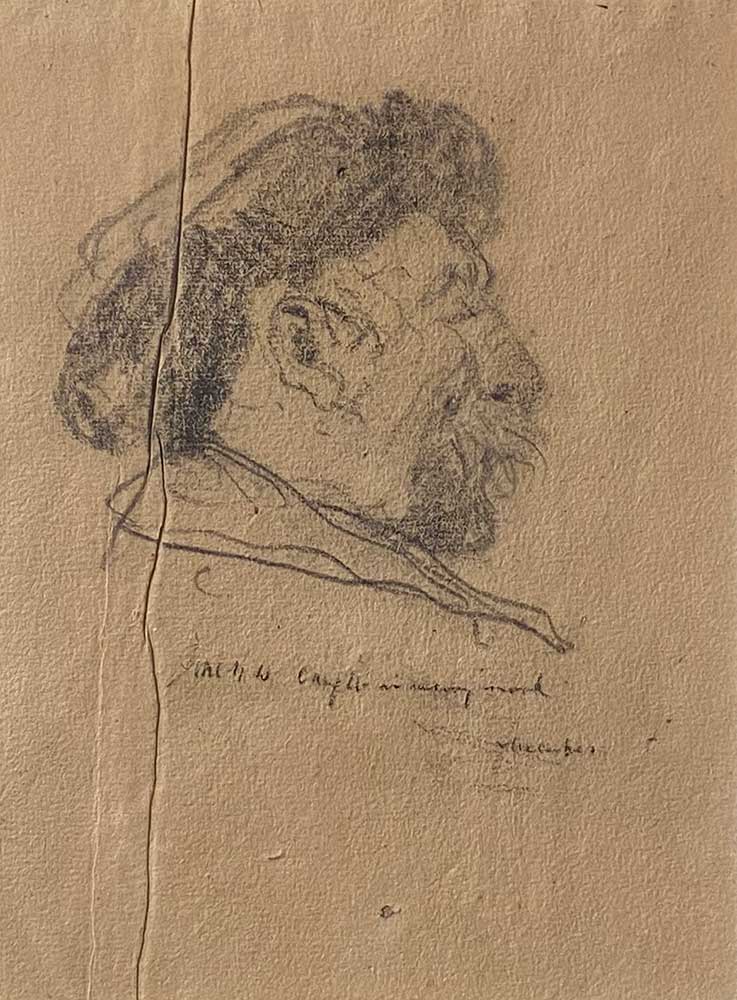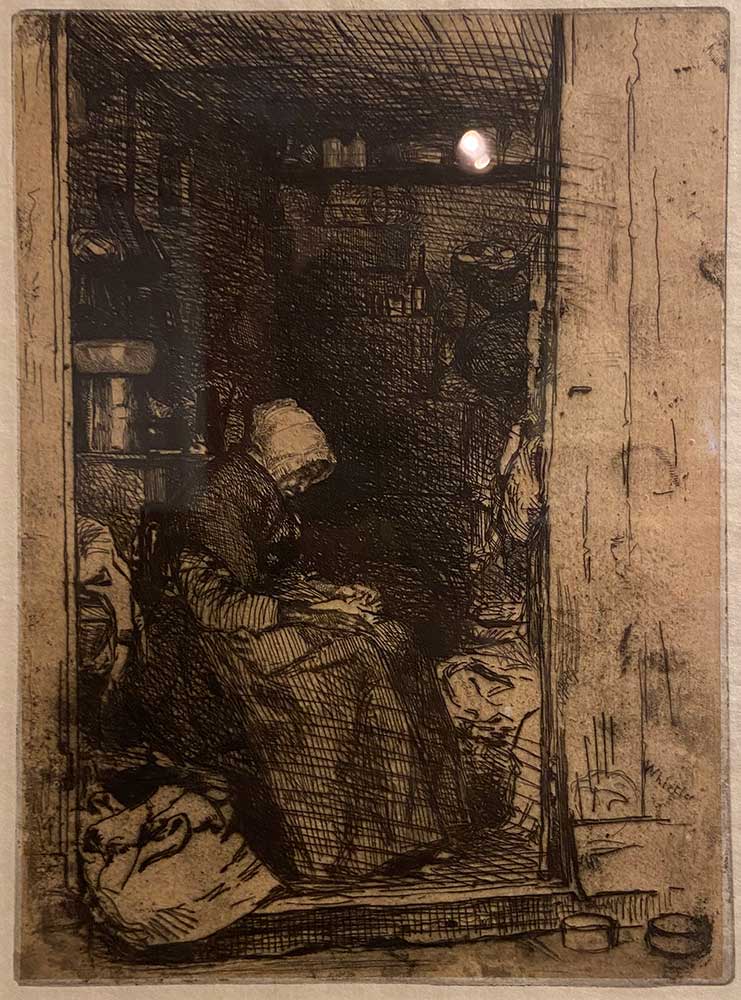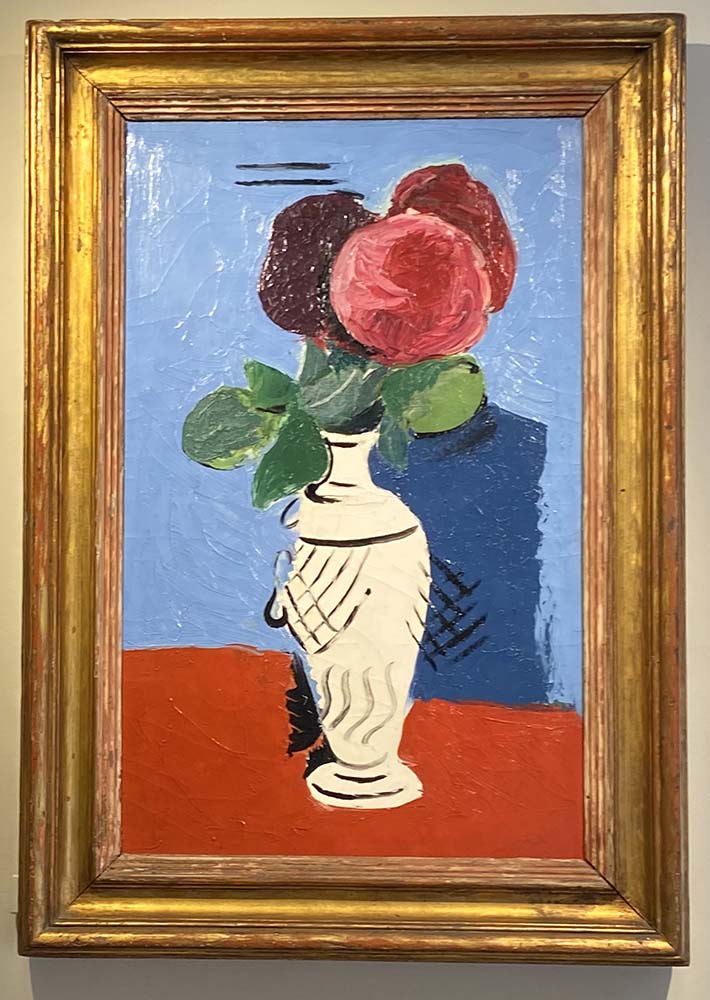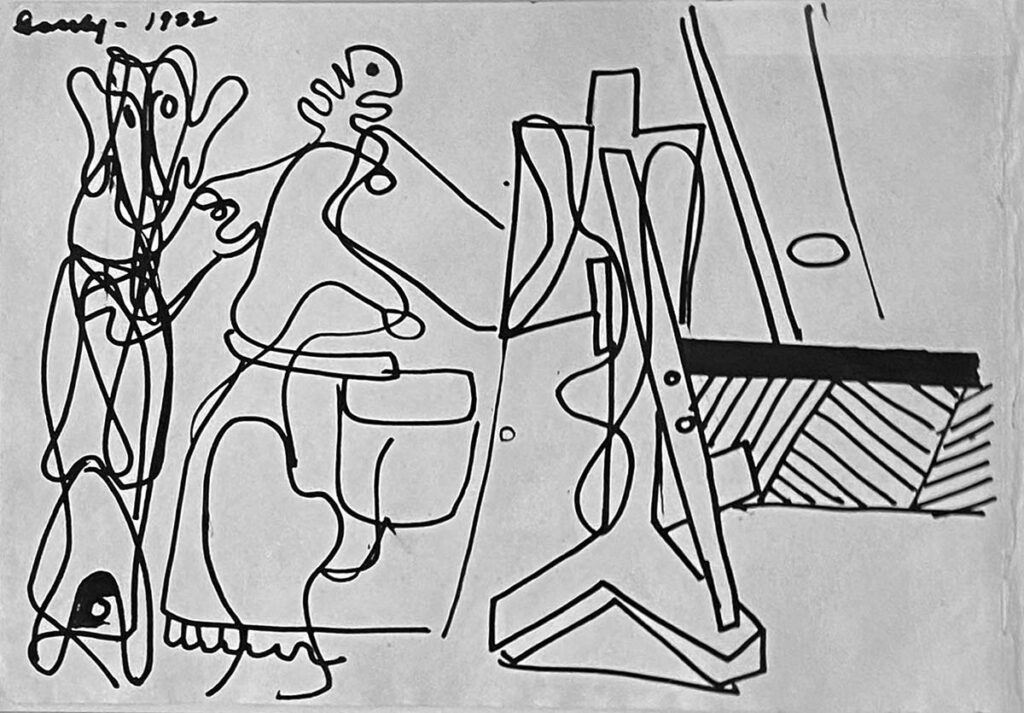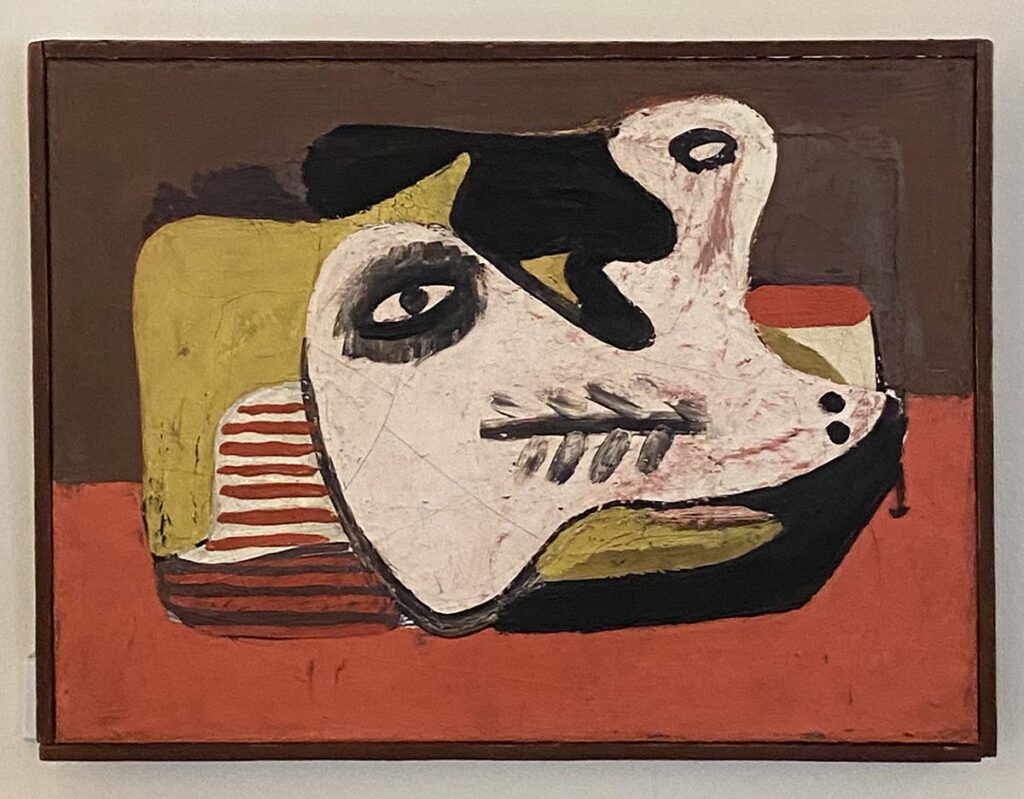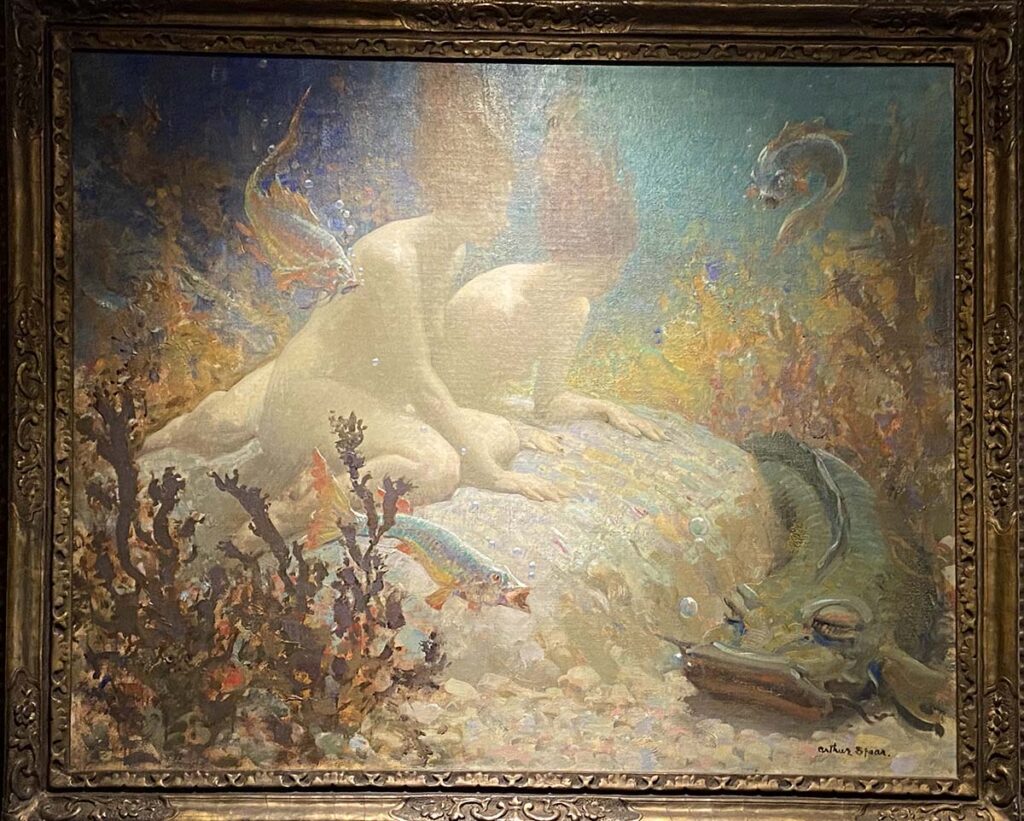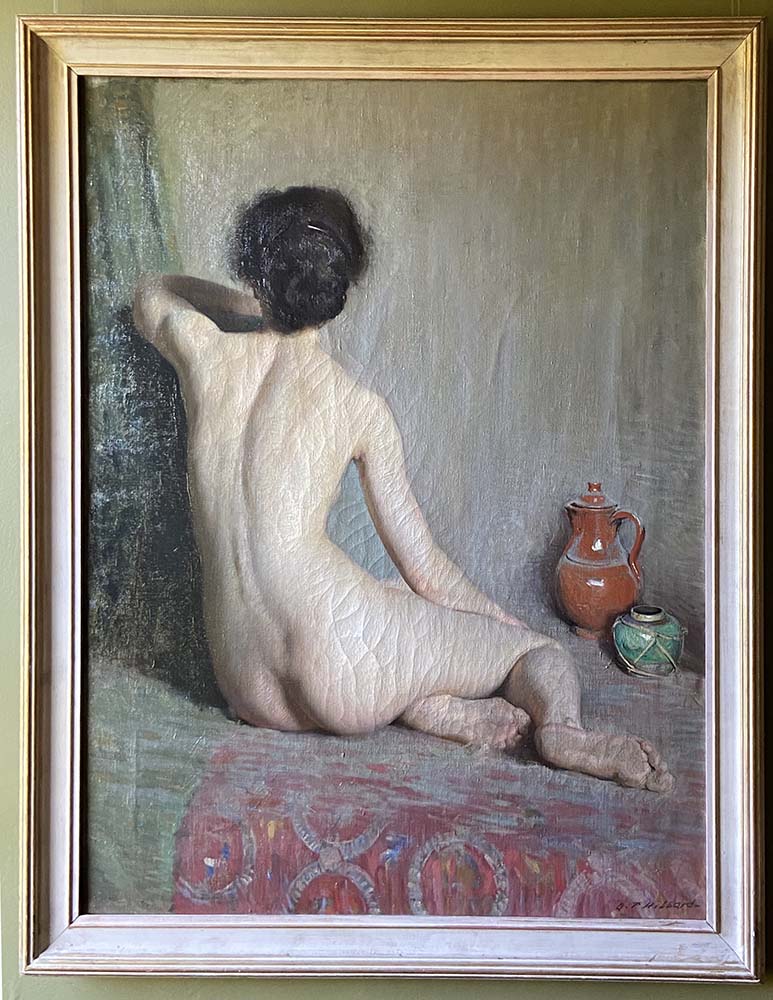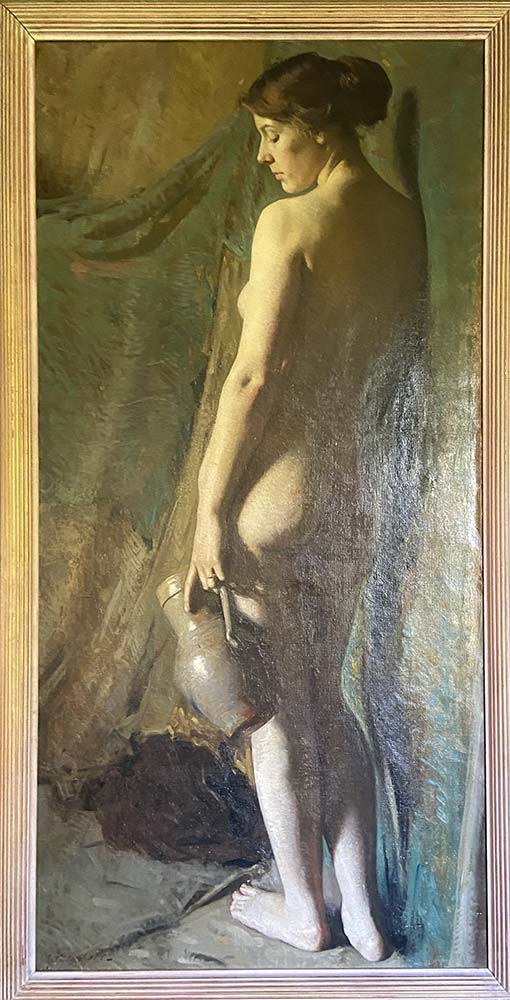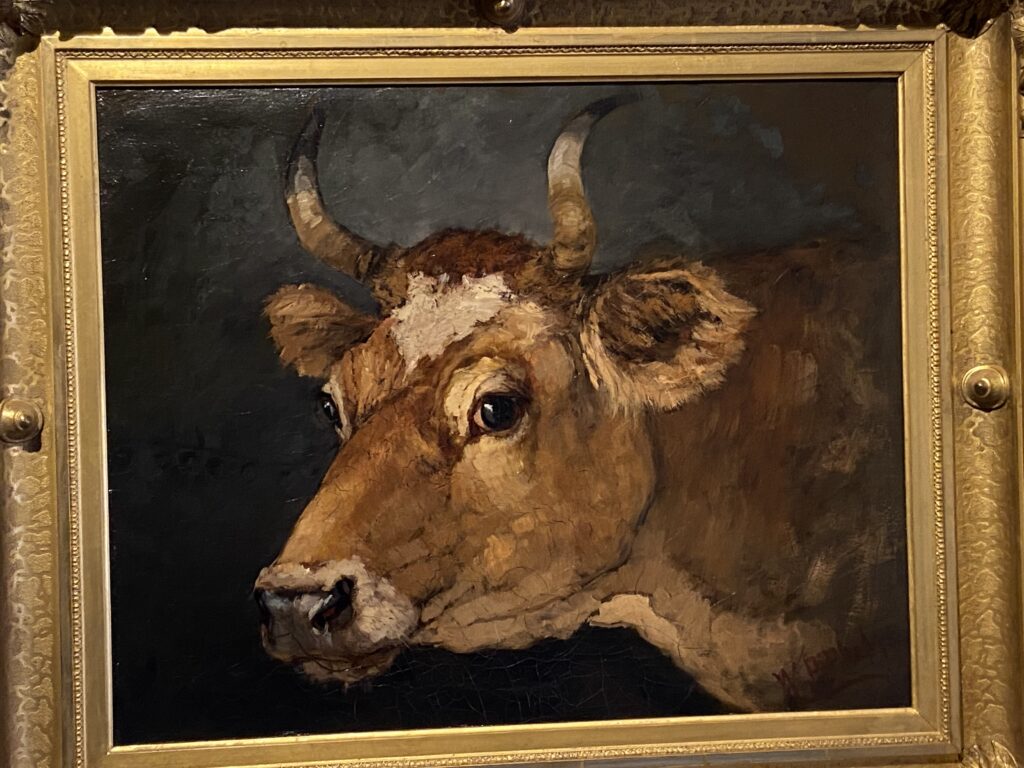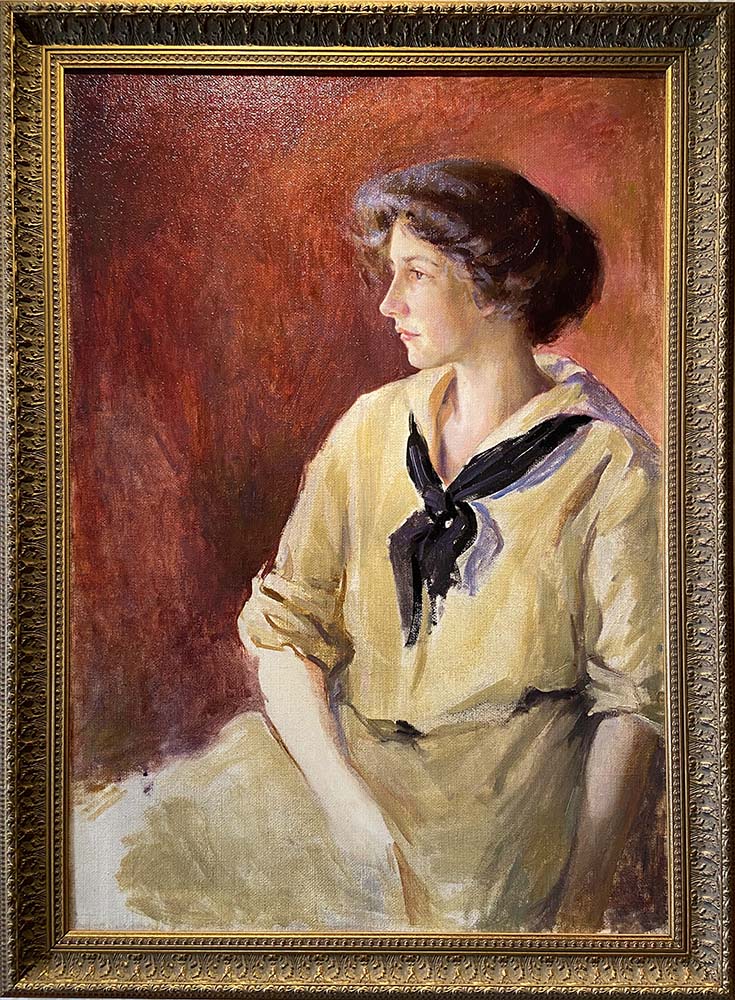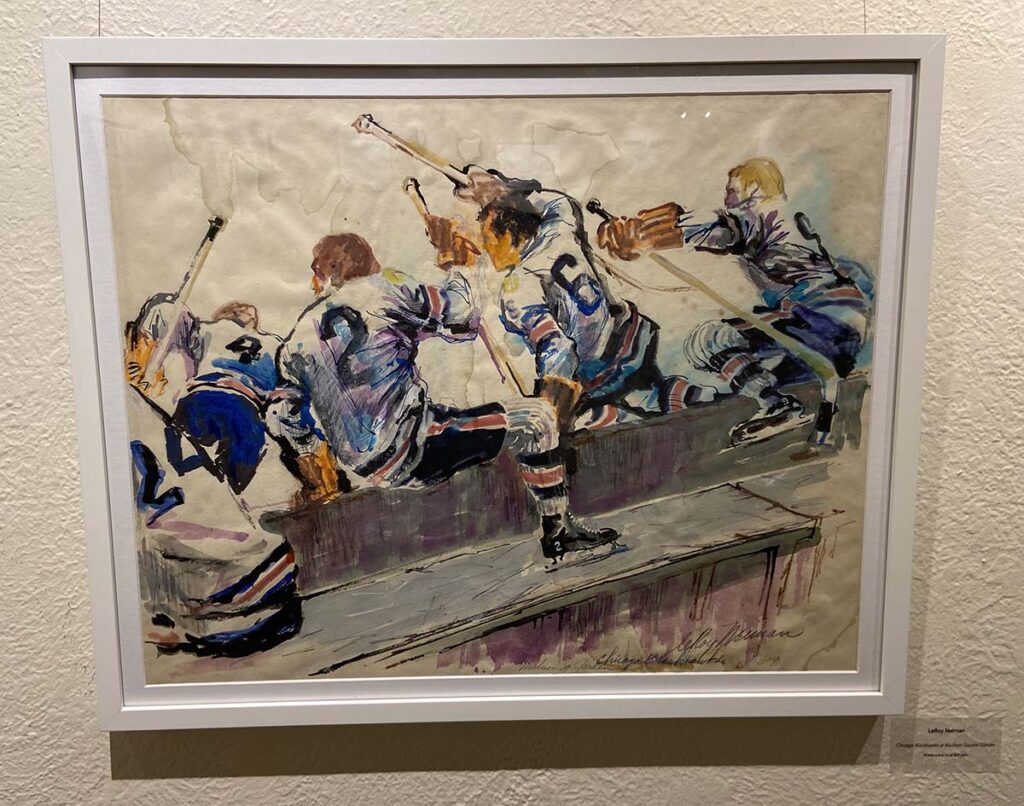Lowell, Massachusetts
My brother and his family live in New Jersey, about a 6 hour drive away from my home in Portland, Maine, which is a pretty long time to be alone in a car. One day this past October I decide to break up the drive and look for an interesting place to stop on the way. I was excited to learn that the birthplace of one of my favorite Post-Impressionist artists not only still existed but was operating as a historical house and art museum in Lowell, MA.
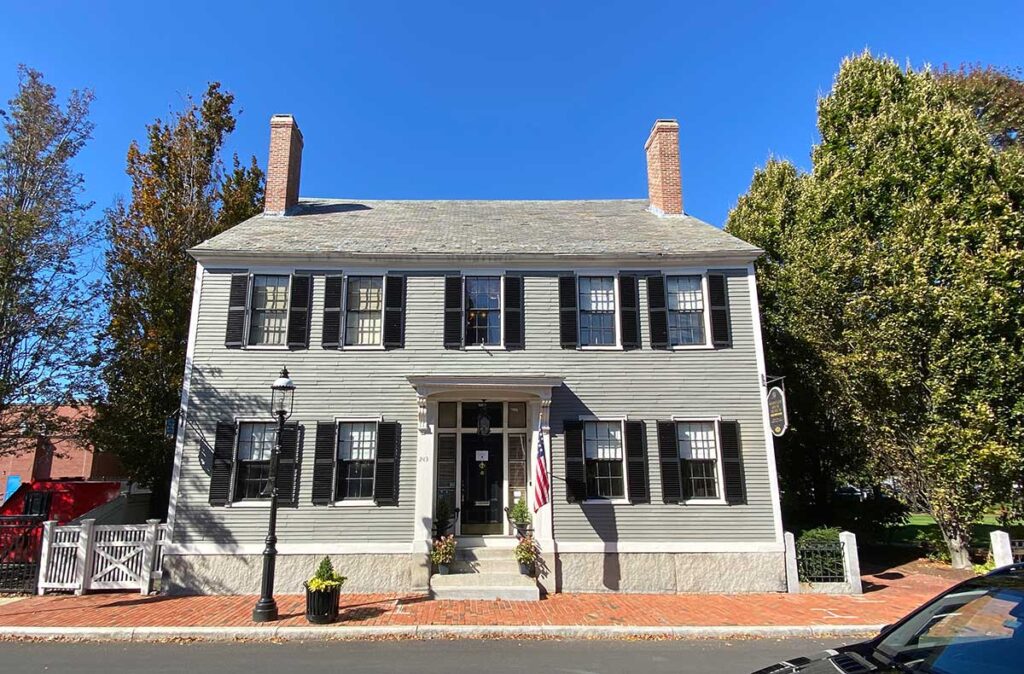
I expected my visit to the Whistler House Museum of Art to be a short one as I had to get get back on the road. I parked behind the museum on Dummer Street and walked through their beautiful, tree-filled courtyard where I was greeted by a statue of James McNeill Whistler covered in dappled sunlight. The other end of the courtyard exited to Worthen Street. The front of the house was quaint and unassuming and looked closed, but the sign on the door invited me to ring the doorbell.
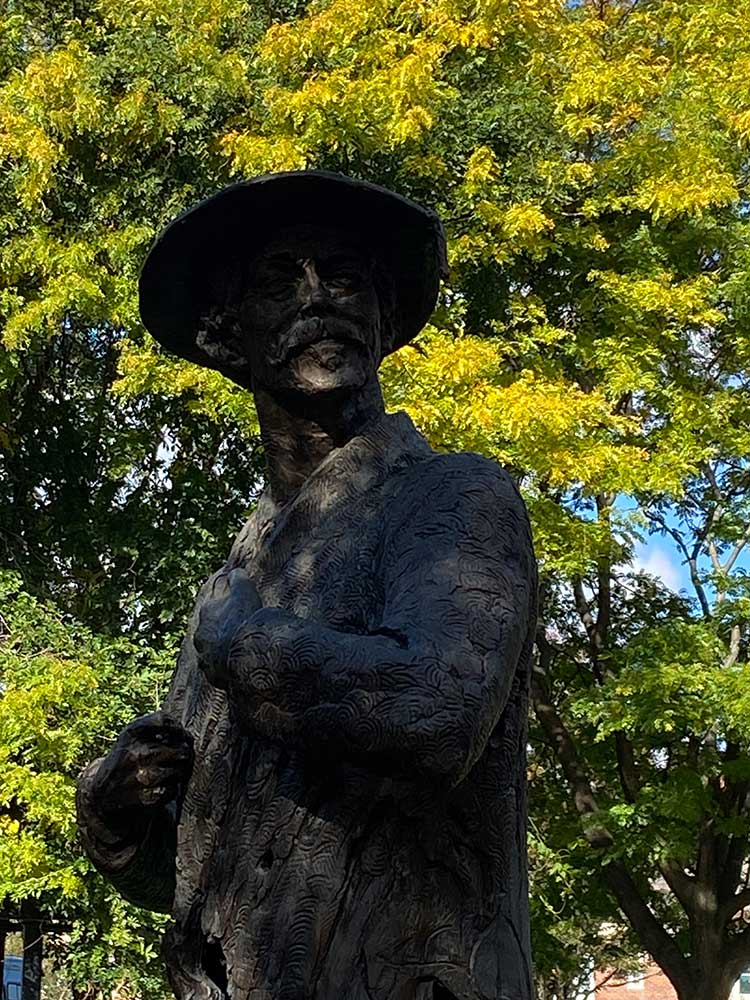
A friendly woman named Elaine greeted me as I entered. Even though I love the historic buildings of New England and have visited quite a few of them, I’m not an architecture expert. According to the museum’s website, the house was built in 1825 “Incorporating both Federal (also known as Colonial) and Greek Revival characteristics…” The house did have the familiar feel of other early 19th century Federal style homes I’d been in.
The most striking thing about the entrance to the Whistler House Museum is the full scale 57 x 65 ½ inch reproduction of James McNeill Whistler’s most famous painting, “Arrangement in Grey and Black, No. 1”, more famously known as the “Whistler’s Mother“
This is not merely a print or student copy. This is a deftly painted reproduction by painter Edith Fairfax Davenport, who also happened to be James McNeill Whistler’s second cousin.
In 1906 she was invited by the curator of the Musée du Luxembourg in Paris, where the original painting was hanging at the time, to paint a copy of it. There were two stipulations: it was to be full size and painted exactly how it looked at the time. By the time Davenport painted her copy, Whistler’s original painting was 35 years old and the varnish had darkened considerably. Davenport’s reproduction is a time capsule which shows us how Whistler’s most famous work would have looked to viewers at the turn of the 20th century.

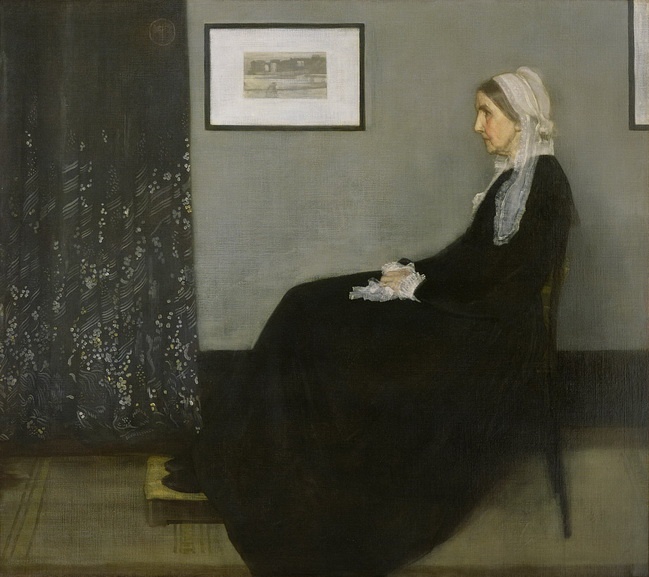
Aside from Davenport’s commanding painting, the entrance parlor contained several 19th century portraits, including one of James’s father, George Washington Whistler, who was living at the house when his wife Anna gave birth to James.
To the right of the entrance was the main dining room with a long table strewn with papers, cards and chocolates — the remains of a rehearsal dinner the museum house had hosted the night before. The room’s walls were covered by a variety of 19th and 20th century portraits, seascapes, and still life paintings.
When Elaine asked if I wanted a tour, any notions I had of a quick visit were instantly cast aside. The tour focused on the house itself. Elaine talked about it’s history as a home built purposely for the chief engineers of the Proprietors of the Locks and Canal, it’s inhabitants, and what each room would have been used for by the Whistler family when James lived there as a young boy. She was careful to point out all the areas that had been beautifully restored. I could tell she took great pride in the museum and the work that went into it.
She was particularly proud of the fact that the restoration of the home’s kitchen had won the “Excellence in Historic Preservation” award from the Lowell National Historical Park and the Lowell Heritage Partnership. To be honest, the kitchen was indeed beautiful.
Artwork at the Whistler House Museum
As impressive as the house was, I couldn’t stop myself from interrupting Elaine to ask about the paintings on the wall. There are truly some artistic gems hanging in the rooms of this little museum.
They have a wonderful self portrait of Lowell artist Thomas Bayley Lawson, as well as two of his “Hanging Grapes” paintings. Thomas Bayley Lawson is probably most famous for his portrait of Secretary of State Daniel Webster. Bayley Lawson’s portrait of fellow artist William Thomas Hunt is in the collection of the National Gallery.
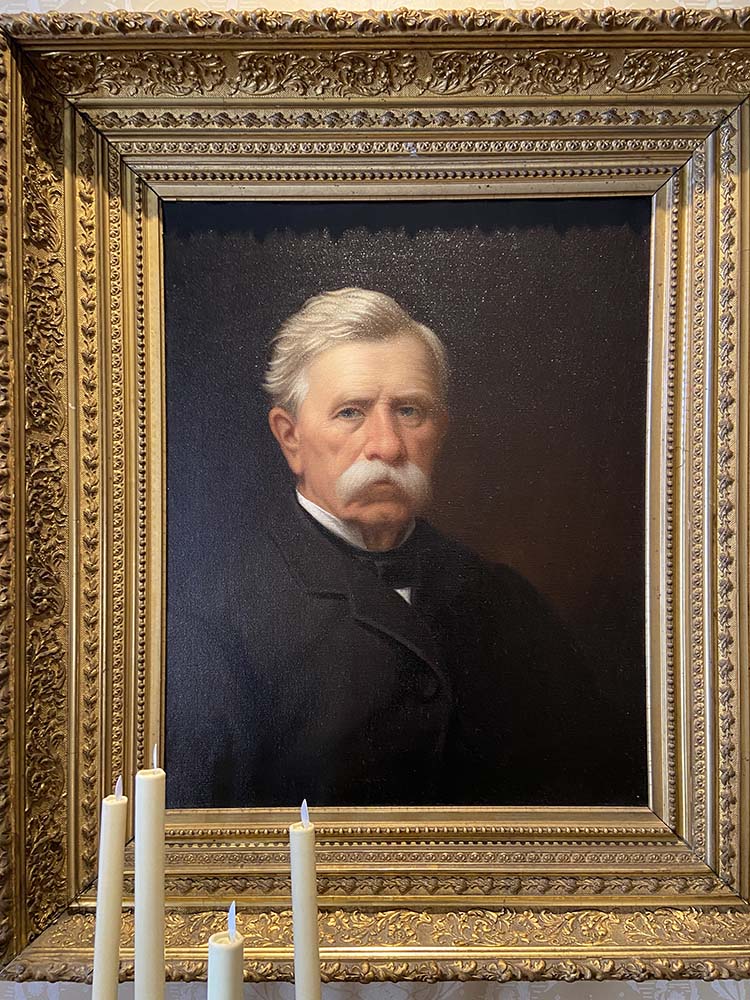
Speaking of William Morris Hunt, the famous Boston portrait and landscape artist (and champion of the Barbizon School of painting) is also represented at the Whistler House Art Museum with his beautiful and atmospheric, “Rising Moon”. I had never seen this work before and was glad to happen up on it, as a lot of his work was destroyed in the Great Boston Fire of 1872.
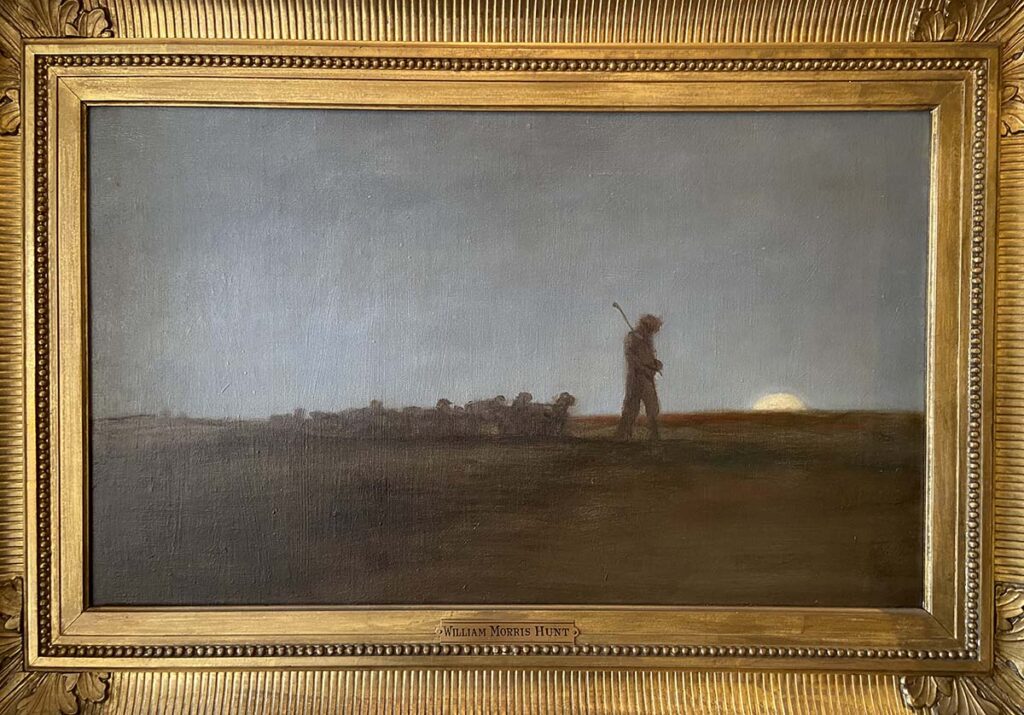
Frederick Porter Vinton’s Venetian Girl, 1878, also hangs in this museum. Vinton was a friend of William Merritt Chase, the giant of American Impressionism in the late 19th century. They traveled and painted landscapes together in Europe. Vinton was most well known as a portrait painter and Venetian Girl demonstrates why. Vinton is also immortalized in a 1903 portrait by John Singer Sargent (on display at the Rhode Island School of Design Museum).

Another outstanding portrait gracing the walls of the Whistler House Museum is the Portrait of Adelaide Walsh (Byers), 1921 by Elizabeth Morse Walsh. Walsh was born in Lowell in 1886 and studied art at the School of the Museum of Fine Arts in Boston where she won a scholarship to continue her studies in Europe. She had a successful portrait career painting notable people in the Boston area including Congresswoman Edith Nourse Rogers, and Calvin Coolidge Jr., son of President Coolidge.
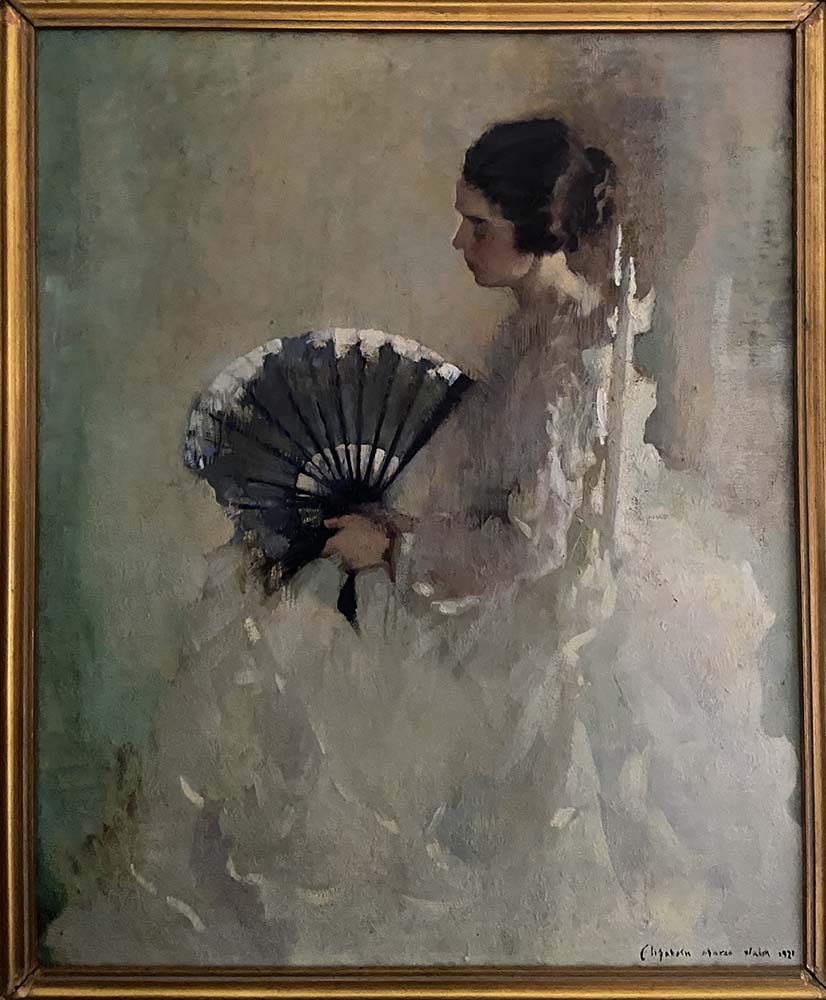
Another painting that caught my eye was that of a dancer looking in a mirror. When it first caught my eye I wondered if it was Degas, but learned it was by an artist name Louis Kronberg, whose name was familiar to me but I couldn’t remember why. It wasn’t until I returned home and looked him up that I remembered that he was a friend of Isabella Stewart Gardner’s and has five works on display at the Isabella Stewart Gardner Museum in Boston. One of them, In the Dressing Room, is often mistaken for a Degas, who was an important inspiration for Kronberg.
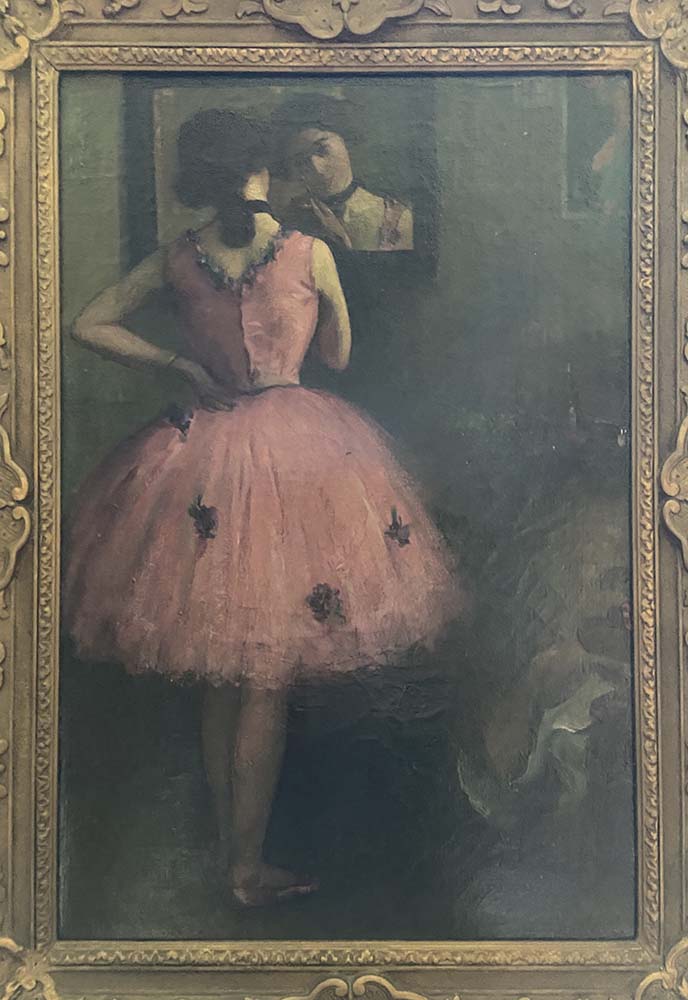
Not a Lot of Whistler at the Whistler House Museum
James McNeill Whistler rarely talked about his childhood in Lowell. He worked mostly in Europe, liked to put on airs, and acted as a bit of dandy. When people would ask him where he was from he’d say Connecticut, where his family moved to after Lowell and before his father was recruited by Tsar Nicholas I to help build the Moscow to Saint Petersburg railway. Apparently the working class town of Lowell didn’t quite fit with the image he was trying to cultivate while painting in Europe.
I assume this is why there is almost no artwork by Whistler at the Whistler House Museum except for a handful of etchings. Fortunately the lack of actual Whistlers doesn’t detract from the museum’s appeal.
Etchings by J.M. Whistler (click images to enlarge)
An Unexpected Expressionist Surprise
After we’d been exploring this quintessential Federalist home with decidedly 19th and 20th century representative art, Elaine asked me a question I never could have seen coming: “Have you heard of Arshile Gorky?”
I was familiar with him and some of his work. She took me to a second floor room that clearly belonged to a house built in 1825, but hanging anachronistically on the walls were quite a few abstract expressionist paintings and drawings, all done by Gorky.
I will admit that abstract expressionism rarely captivates me, but the juxtaposition of Gorky’s work hanging in a such a traditionally New England home delighted me to no end. What I do like about abstract expressionism is that you can trace it’s origins all the way back the Romanticist painters. They were the mavericks who threw off the yoke of Academic painters and social constraints that had come before them and paved the way for the Realists, then the Modernists, then the Impressionists, Post Impressionists, Cubists, and so forth.
The initial disorientation of seeing these works in this unlikely space began to fade when I noticed an atmospheric painting of a church amidst the other work which could have been painted by Cezanne in the late impressionism era. I was surprised to learn “Park Street Church” was painted by Gorky in Boston in 1924. It is a tangible artistic link between the Post-Impressionist and Abstract Expressionst movements. The more I thought about how Whistler attempted to incorporate musical expression into his paintings, the more I realized that perhaps Gorky’s presence here wasn’t all that unlikely after all.
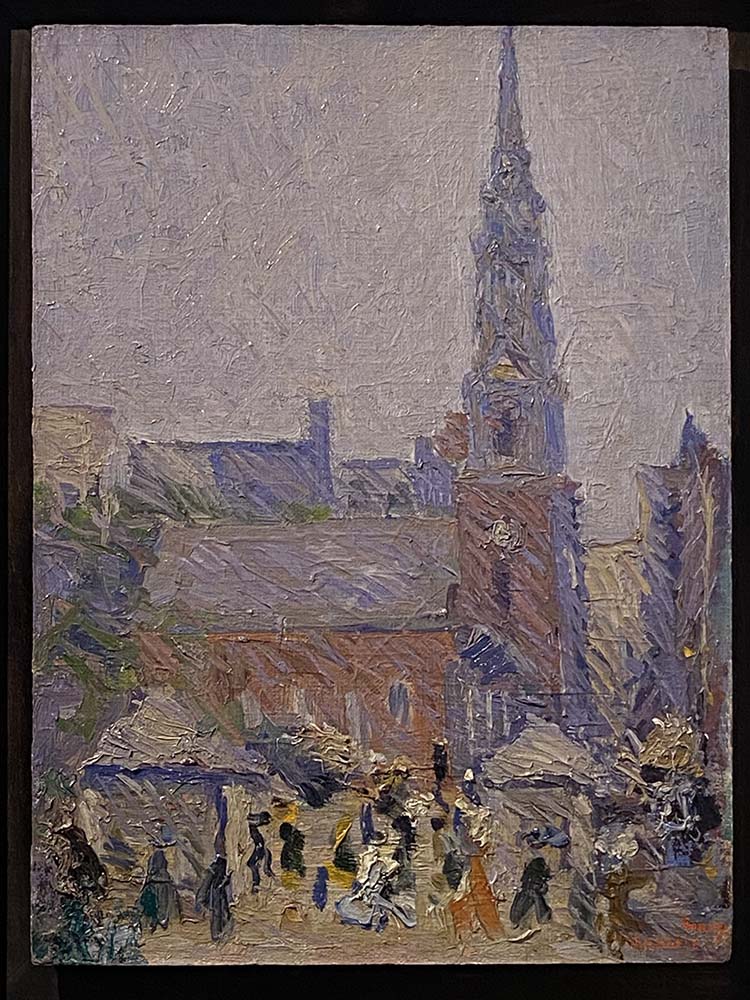
More work by Gorky (click images to enlarge)
But wait, there’s more…
After a couple of hours in the museum, I still had a 4 hour drive to New Jersey. I reluctantly said my good byes and promised to return. There was still so much more artwork I wanted to look at and have more time to enjoy. Here are a few more artists that stood out to me that I did have time to see.
Mary Earl Wood
There was a striking portrait of a woman on a red background, Portrait of Woman in Profile, undated, by an artist named Mary Earl Wood (1866 – 1951). All I could learn about her was she studied at the Museum of Fine Arts School in Boston and was known for portraits, landscapes, and oil and watercolor illustrations.
William Preston Phelps
William Preston Phelps was another Lowell artist who travelled and painted with William Merritt Chase and also studied art with James McNeill Whistler in Munich. He was a successful sign painter who sold his artwork from his shop window before turning to painting full time. He was known for building temporary structures outdoors so he could complete his plein air landscapes, including a monumental 7′ x 12′ painting of the Grand Canyon. However, it was his considerably smaller 17″ x 21″ painting of a cow’s head that immediately caught my eye. It was one of my favorite paintings from the visit.
Aldro Thompson Hibbard
There were a couple of beautiful nudes by Aldro Thompson Hibbard, who was primarily known as a prolific landscape artist and regarded as one of the best painters of snow in America. These beautiful figure paintings show that Hibbard was a masterful painter of more than just snow.
Arthur Prince Spear
There was a colorful underwater painting of two nymphs sitting on a rock watching a grumpy fish swim along the seabed. I’d never heard of the artist, Arthur Prince Spear (1879-1959) before, but he was known for his fantastical paintings of mythological creatures. The best I way I can describe his work is as Maxfield Parrish meets Impressionism.
LeRoy Neiman
Another delightful surprise was a small watercolor of hockey players coming off the bench by LeRoy Neiman. Neiman was very well known for his colorful palette knife paintings of sports figures in the 90’s. Many critics and artists considered his work garish, sloppy, and pandering, but he was hugely popular. I was never a fan of his work, to be honest, but this tiny watercolor was beautifully done. It captured the moment perfectly with an economy of paint and ink.
(Click images to enlarge)
Final Thoughts
One of the things I love about the Whistler House Museum is how unpretentious it is. At its heart it’s a historic home that played a role in Lowell’s manufacturing heyday during the American Industrial Revolution. It just happens to be where James McNeill Whistler was born. Now, it just happens to be the home of many wonderful works by artists who helped American painting emerge from the shadow of European art.
Nothing exemplifies the museum’s unassuming nature more than a beautiful figure drawing, a study really, tucked in a corner behind a fireplace. I recognized John Singer Sargent’s style right away. Surely an original drawing by America’s greatest portrait painter, even a study for one of his Boston Public Library murals, would be more prominently displayed. At another small museum, perhaps. But at the Whistler House Museum, they seem to be more proud of the beautifully restored fireplace.
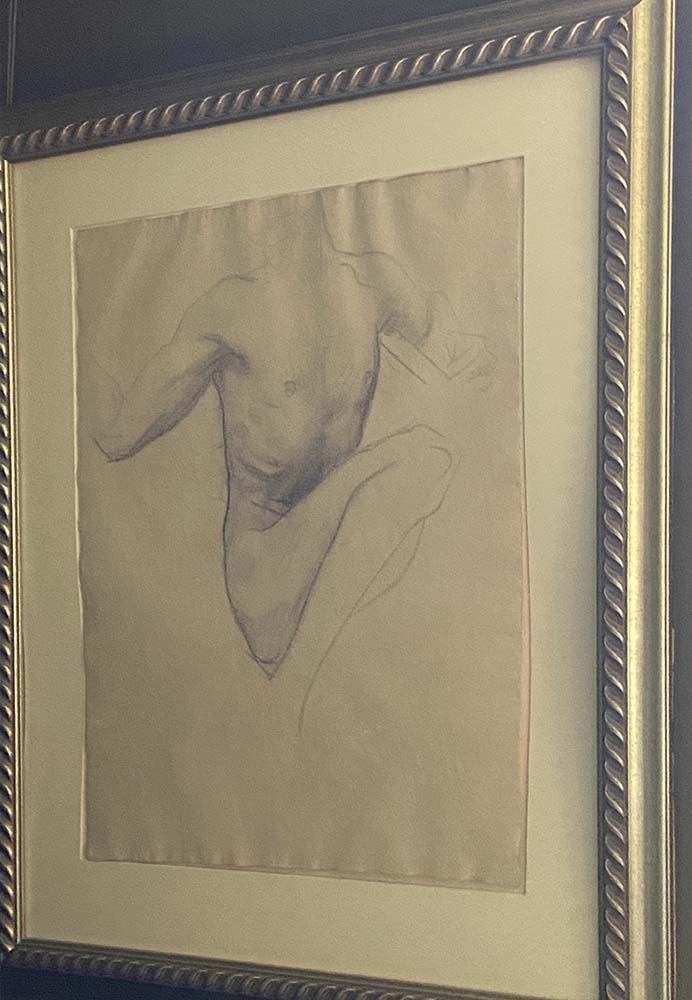
The museum is more than just architecture and art. They have many artifacts from regular 19th century life on display in the period-accurate finished rooms. My favorite was the hat box containing an actual beaver pelt top hat that would have been worn up through the 1850’s. It was just one more surprise in a house full of them.
On my way out, we stopped back in the main dining room so I could pay my entrance fee and join their email list. Elaine introduced me to Sarah, the Whistler House Museum’s President and Executive Director. She and another volunteer had stopped cleaning up after the previous night’s rehearsal dinner to admire a large, ornate silver tureen that had just been donated by a distant relative of the Whistler family. It was a gift with an inscrption from Tsar Nicholas I to George Washington Whistler thanking James’s father for his work on the Saint Petersburg to Moscow railway.
Their excitement was plain to see and was infectious. I found myself fully enthralled by the story of how this Whistler family artifact came into their possession. Sarah even gave me some leftover rehearsal dinner chocolates as I left. I couldn’t help feel that despite the award winning restoration and the impressive collection of artwork, excitement and enthusiasm were the real attractions at the Whistler House Museum of Art.
